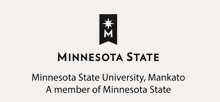Document Type
Article
Publication Date
2015
Abstract
Teacher preparation programs and accreditation organizations have acknowledged need for educators to demonstrate intercultural knowledge, skills, and abilities. Teacher educators are responding to emphasis in higher education to assure that graduates achieve intercultural competence (NCATE, 2008). This study compared the cultural competency of university students before and after participation in domestic intensive and intentional cross-cultural undergraduate courses. Data analysis showed that undergraduate students began their classes at the same levels of intercultural competence, with ethnocentric views that minimize cultural differences between themselves and others. Students usually began with over-estimating their intercultural competence. However, their actual developmental orientation toward cultural differences was more ethno-centric. Due to their lack of experience among people of cultures different than their own, they were more likely to minimize cultural differences and emphasize cultural commonalities. During this investigation, after the first semester, data analysis showed no statistically significant change in students’ cultural competence. After a semester with higher-impact activities (e.g., cultural partnerships), subjects showed statistically significant positive gains in their orientations to cultures different than their own. Investigators concluded that domestic inter-cultural experiences may encourage university students to not only learn about others, but also learn from and with others.
Department
Elementary and Early Childhood Education
Publication Title
International Journal of Teaching and Learning in Higher Education
Recommended Citation
Sandell, E. J. and Tupy, S. J. (2016). Where Cultural Competency Begins: Changes in Undergraduate Students' Intercultural Competency. International Journal of Teaching and Learning in Higher Education, 27(3), 364 – 381. Available from http://www.isetl.org/ijtlhe/current.cfm.
Publisher's Copyright and Source
Originally published in the International Journal of Teaching and Learning in Higher Education, volume 27, issue number 3, 2015, pages 364-381. Available online at: http://www.isetl.org/ijtlhe/pdf/IJTLHE2058.pdf. Paper published under a Creative Commons Attribution-NoDerivs 3.0 Unported License. 
Creative Commons License

This work is licensed under a Creative Commons Attribution-No Derivative Works 3.0 License.


